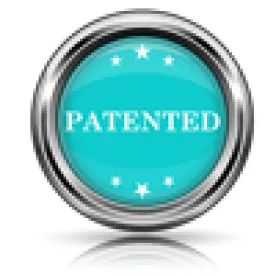In a 6-4 ruling, a sharply divided en banc Federal Circuit overturned the original panel decision and deferred to the International Trade Commission’s (ITC or Commission) interpretation of the phrase “articles that … infringe” and its issuance of a limited exclusion order based on a finding of induced infringement in a case where the product, as it crossed the customs boarder, did not infringe. Suprema, Inc. and Mentalix Inc. v. Int’l Trade Comm’n, Case No. 12-1170 (Fed. Cir. Aug. 10, 2015) (Reyna, J.) (O’Malley, J.; Proust, J.; Lourie, J. and Dyk, J., dissenting).
Suprema manufactures hardware for scanning fingerprints. The scanners must be connected to a computer running custom-developed software. Suprema does not provide the software, but instead provides software development kits so its customers can create their own software. Suprema imported these scanners into the United States and sold them to Mentalix, which developed the customized software.
Cross Match Technologies filed a complaint at the ITC alleging that Suprema’s scanners operating with Mentalix’s software infringed one of its patents. Cross Match also alleged that Suprema induced infringement by encouraging Mentalix to combine its scanners with the Mentalix software after importation. The full Commission found that the combination of Suprema’s scanners and Mentalix’s software infringed Cross Match’s patent and that Suprema had induced infringement. It issued a limited exclusion order (LEO) barring Suprema from importation of the accused scanners, with or without the additional software. Suprema appealed, arguing that § 337 of the Tariff Act did not permit entry of an exclusion order under a theory of induced infringement, where the infringing activity does not occur until after importation, because the scanners, as imported (i.e., without the software), did not infringe Cross Match’s patent.
In the initial appeal, a divided three judge panel of the Federal Circuit agreed with Suprema, reversing the Commission’s entry of an exclusion order by a 2-1 ruling, with Judge O’Malley writing the opinion and Judge Reyna dissenting (IP Update, Vol. 16, No. 12). In the panel decision, the Federal Circuit noted that the combination of scanner and software was not imported, sold for importation or sold after importation and, therefore, that product was not subject to an LEO. The panel then found the Commission’s authority to issue an exclusion order under § 337 was limited to "articles that ... infringe," and that under § 271(b) (the inducement provision of the Patent Act), “[p]rior to the commission of any direct infringement, for purposes of inducement of infringement, there are no ‘articles that … infringe’—a prerequisite to the Commission’s exercise of authority” under § 337. The panel reasoned that because the scanners without software did not directly infringe, the Commission could not exclude them based solely on Suprema’s intent to induce.
On the ITC’s petition for en banc review, the full Federal Circuit vacated the panel opinion and granted rehearing en banc to consider “whether the Commission correctly concluded that unfair trade acts covered by § 337 include the importation of articles used to infringe by the importer at the inducement of the articles’ seller.” (See IP Update, Vol. 17, No. 5.)
In its en banc decision, the Federal Circuit has now ruled in favor of the ITC, Judge Reyna now writing for the majority and Judge O’Malley for the dissent. The majority and dissent parted ways over whether the phrase “articles that … infringe” in § 337 was sufficiently ambiguous that the ITC’s interpretation should be granted deference under the Supreme Court’s 1984 Chevron case.
The majority concluded that due to the difference between the in rem language of § 337 and the in personam language of § 271 the phrase “articles that … infringe” introduced textual uncertainty into § 337. Under the Patent Act persons infringe a patent, but under the Tariff Act, use of the language “articles that … infringe” attempts to apply the same analysis to products. The majority found that “the phrase ‘articles that infringe’ does not map onto the Patent Act’s definition of infringement.” This textual uncertainty, the majority concluded, “requir[ed] resolution by the agency charged with Section 337’s enforcement”—the ITC. The majority found that the ITC’s interpretation that “articles that … infringe” encompassed products where induced infringement could be proven, even if the corresponding act of direct infringement occurred post-importation, was not an unreasonable resolution of the uncertainty and, applying the Chevron deference standard, upheld the ITC interpretation. In support of its conclusion, the majority further explained that Congress had historically vested the Commission with broad enforcement authority to remedy unfair trade acts; that the phrase “articles that … infringe” was added to § 337 as part of an amendment expanding the Commission’s authority; that the Commission had consistently interpreted § 337 as providing it with authority to grant exclusion orders based on induced infringement; and that the ITC’s interpretation of its authority furthered its statutory mandate to safeguard United States commercial interests at the border.
The Dissent
According to the dissent, the phrase “articles that … infringe” in § 337 is unambiguous, and therefore the ITC’s interpretation deserved no deference. In the dissent’s view, the phrase “articles that … infringe,” combined with the limitation of liability under § 337 to goods imported into the United States, sold for importation into the United States or sold after importation in the United States, was a clear statement by Congress that the ITC’s jurisdiction is limited temporally to only acts of infringement that occurred at the time of importation. Thus, a product that does not infringe an asserted patent at the time of importation cannot be the subject of a limited exclusion order, regardless of whether the intent to induce infringement after importation already exists, because the article itself does not infringe the patent. In the view of the dissent, the ITC is powerless to take action against such products, and the proper place to seek relief in such cases is in the district court. The dissent rejected the majority’s argument that the Commission had consistently interpreted its authority to cover induced infringement, arguing that no case had ever presented the issue of a limited exclusion based solely on induced infringement—i.e., in every prior case where induced infringement was at issue, there was a corresponding case of direct infringement by the imported article. Finally, the dissent noted that permitting an exclusion order to issue based solely on induced infringement would require Customs Service officers to determine whether or not a non-infringing product was imported in order to later be used in an infringing manner and with the intent necessary for a finding of induced infringement, a task for which the Customs Service is ill-suited. The dissent also argued that the majority’s ruling exposed importers to potentially harsh liability for violations of an exclusion order, even if the importer provided a bona fide certification statement, based on a post hoc determination of intent.
Practice Note: Judges Moore and Stoll did not participate in the decision. Given that the Federal Circuit was nearly evenly divided, it is highly likely that Supreme will file a writ of certiorari in this case.




 />i
/>i
